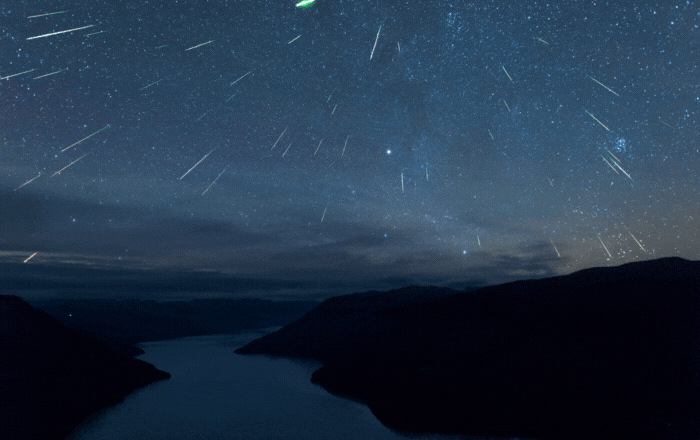The Geminids are the last substantial meteoric event of the year
,
The only other showers in December are the Ursids, short-lived and not massively strong, and the Quadrantids, which begin in December but take us into January.

I’ve started your Guide with the Quadrantids and gone through 2023 back around to the Geminids and the Ursids from there…
What’s the shower called? | When does it happen? | When does it peak? | What is notable? What makes the shower unique? | What does the shower mean, psychologically and spiritually? |
The Quadrantids | December 12th, 2022 to January 12th, 2023 | January 3rd and 4th | Quadrantids meteors are blue or yellow-white with narrow trains. They’re produced by the 2003 EH1 comet. | Originating from the Bootes constellation, this shower brings decisive, manifestation-friendly energies to earth. |
The April Lyrids | April 16th to 29th | April 22nd and 23rd | April Lyrids meteors are bright and quick. Some have trains. They’re produced by the C/1861 G1 Thatcher comet. | Originating from the Lyra constellation, this shower brings fun, confident and adventurous energies to earth. |
The Eta Aquariids | April 19th to May 28th | May 6th and 7th | These meteors are low in the sky, sometimes easier to spot but sometimes obscured by the moon. They’re produced by the 1P/Halley periodic comet. | Originating from the Aquarius constellation, this shower provides an ideal opportunity for connection with your higher self and self-enhancement. |
The Delta Aquariids | July 12th to August 23rd | July 28th and 29th | These meteors don’t tend to arrive at a rate above 20 per hour, even at their peak, but they are steadily passing through the sky. They’re thought to be produced by the 96P Machholz comet. | Originating again from the Aquarius constellation, this longer, steadier alternative to the previous shower is an ideal time for self-reflection, planning for the future and setting goals. |
The Perseids | July 17th to August 24th | August 12th and 13th | These meteors are bright and quick with trains. They peak at up to 100 meteors per hour. They’re produced by the Swift-Tuttle comet. | Originating from the Perseus constellation, this shower brings feelings of compassion, love and deepened empathy to earth. |
The October Draconids | October 6th to 10th | October 7th and 8th | These meteors, best seen in the early evening, aren’t around for long. They peak at about 10 meteors an hour and are produced by the 21P/Giacobini-Zinner periodic comet. | Originating from the Draco constellation, this shower brings harmonious, connected and balanced energies to earth. |
The Orionids | October 2nd to November 7th | October 21st and 22nd | These meteors are fast with narrow trains, and this shower is the most prolific shower produced by mega-famous Halley’s Comet. | Originating from the Orion constellation, this shower provides an ideal opportunity/astral landscape for significant cultural change and transformation. |
The Taurids | September 10th to November 20th | November 4th and 5th | These meteors move slowly. They’re actually two separate showers combined – the Southern Taurids and the Northern Taurids, produced by Comet Encke and the 2004 TG asteroid respectively. | Originating from the Taurus constellation, this shower brings revelatory, wisdom-increasing energies to earth. |
The Leonids | November 6th to 30th | November 17th and 18th | These meteors are quick and bright with narrow trains. They’re produced by the Temple-Tuttle comet and enjoy a huge meteor storm around every 33 years. | Originating from the Leo constellation, this shower will bring many who need it the strength to finally say goodbye to the hobbies, roles and people that aren’t serving them. |
The Geminids | December 4th to 17th | December 13th and 14th | As you likely already know from all you’ve learned about the Geminids recently, these meteors are very bright but rarely have trains. They’re produced by the 3200 Phaethon object, which is thought to be a Palladian asteroid. | Originating from the Gemini constellation, this shower (again, as you likely know) brings enhanced divinatory energies and inspiring, activating vibes to earth. |
The Ursids | December 17th to 26th | December 21st and 22nd | These meteors, the last of the year, are only around for just over a week and sometimes tough to spot. They’re thought to be produced by the 8P/Tuttle comet. | Originating from the Ursa Major constellation, this shower brings creative, tolerant and romantic energies to earth. |
There you have it, . A full rundown of 2023 and all the meteoric events you could harness for your benefit.
I’d ask you to use it wisely – but I’m already sure you will.
Your loving friend,

